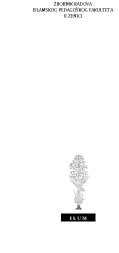POSLANIKOVE SUPRUGE (UMMEHATU-L-MU’MININ)
PROPHET’S WIVES (UMMEHATU-L-MU’MININ)
Author(s): Safvet HalilovićSubject(s): Education
Published by: Islamski pedagoški fakultet Univerziteta u Zenici
Summary/Abstract: The wives of Allah’s Messenger s.a.w.s. have a special place and treatment in Islamic tradition. According to the Qur’an they are Umehatu-l-mu’minin (Mothers of the believers): ¨The Prophet is closer to the believers than their ownselves, and his wives are their mothers.¨ (El-Ahzab). The Prophet’s wives had a specific treatment after his death too: they were not allowed to remarry. In terms of this issue all Islamic scholars reached consensus. Undoubtedly, Allah’s Messenger s.a.w.s. did not choose polygamy to satisfy his passion. Those who still say that the passion was his reason for polygamy should be reminded of the following historically undisputable facts: Firstly, the Prophet s.a.w.s. could have chosen the most beautiful young girls for his wives and provide himself with a great physical pleasure. However, he did not do such a thing: the only virgin he married was Aisha r.a., all the others were had been married before and most of them were middle-aged. This undoubtedly proves that satisfying physical needs was secondary in the Prophet’s life while fulfilling high moral demands was his priority. That way the Prophet, s.a.w.s., affirmed the highest human values. This can be proved by an insight into special reasons for marriage regarding each wife. It is obvious that reaching physical pleasure was never the Prophet’s ultimate aim. Secondly, it is a well-known fact that the Prophet grew up in Mekkah, living honorable and unblemished life. Both Muslims and non-Muslims scholars agree on this matter. Even then high-moral characteristics were a part of his personality and his nicknames were Es-Sadik (he who always tells the truth) and El-Emin (trustworthy). The Prophet’s biographers noted that, at the time when Mekkah youth enjoyed wine, gambling and fornication, the Prophet kept himself far away from those vices. Thirdly, the Prophet, s.a.w.s., was married to a woman when he was twenty five and spent most of his life with her (he was fifty when she died). He was married to hazreti Hatija for twenty five years. She was fifteen years older. Only after her death, in his sixties he decided to have more wives. The above facts, written in the relevant historic literature, undoubtedly show that the Prophet’s polygamy had much deeper sense than a pure physical satisfaction. This paper, in short, discusses the wives of the last Allah’s Messenger who have Umm-l-mu’minin (Mother of the believers) as well as the reasons that made the Prophet, s.a.w.s., to marry more wives.
Journal: Zbornik radova Islamskog pedagoškog fakulteta u Zenici
- Issue Year: 2007
- Issue No: 05
- Page Range: 79-98
- Page Count: 20
- Language: Bosnian

